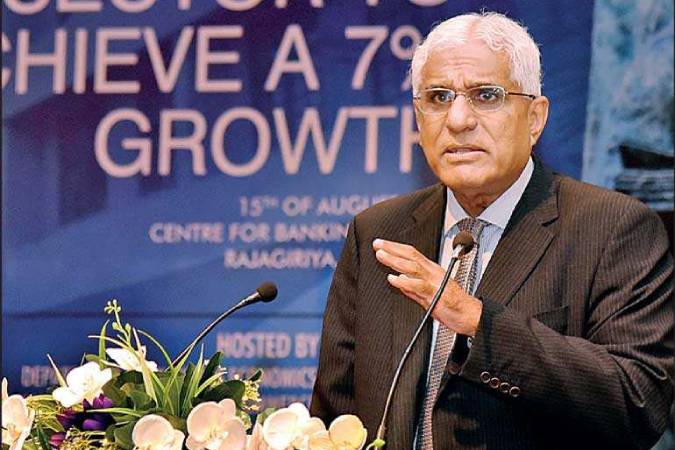Central Bank Governor Dr. Indrajit Coomaraswamy yesterday defended the monetary authority’s decision to impose caps on interest lending rates, insisting that it was an effort aimed at giving a strong tailwind to the economy to grow post-March once the election cycle was over.
Speaking at the inauguration of the Association of Professional Bankers’ 31st Anniversary Convention titled ‘Challenge of Disruptive Change – Together Towards Tomorrow’, Dr. Coomaraswamy gave a rundown of policy decisions taken by the Central Bank in recent months and emphasised that even though macroeconomic growth remained sound, it was necessary to give the economy a boost to see better growth numbers.
He touched on the challenge of seeing the trickledown effects of two policy rate reductions this year, which he argued left the Central Bank with little choice but to impose lending rate caps. The restrictions will be reviewed and are likely to be rolled back in March next year when business and investment sentiment is expected to be better.
“Nominal growth at the moment is 8%, which is 5% inflation and 3% growth, but if the average weighted lending rate is higher than that it is not feasible for businesses to borrow. This is one of the reasons why lending rate caps were imposed.
Persistent high interest rates are a big drag on the economy. The idea is giving time for banks to re-price their loans. I know there are lots of complaints of what the Central Bank is doing but this is only till March. By then hopefully the election cycle will be over and we will have an interest rate structure that will provide a strong headwind for the economy,” he said.
Dr. Coomaraswamy acknowledged that while macroeconomic fundamentals have remained strong, supporting Government borrowings and giving confidence to investors, it was essential to push up growth through reforms that have largely stalled in the run-up to the Presidential Election in mid-November.
“We are saying we have sound macroeconomic fundamentals when the economy is growing at 3%. That is a bit like saying the engine is not overheating when the car is running at 30 miles per hour. We need the car to run at 60 miles per hour and keep the engine from overheating. The economy needs to run at 6% growth and still have sound macroeconomic fundamentals. This means we have to strengthen the growth framework and we have to implement trade, investment and other reforms.”
A slowdown in imports, together with a resilient export sector, has resulted in Sri Lanka seeing its trade deficit reduce significantly in the first seven months of 2019 but this has been dented by the lower tourism earnings after the East Sunday attacks, Dr. Coomaraswamy stated.
“On the external front, what we are seeing is a significant reduction in the trade deficit. In the first seven months of this year the trade deficit has adjusted downward by almost Rs. 2 billion. However, much of this has been offset by the reduction in the services sector, particularly in the tourism industry due to the Easter Sunday incidents. The expectation was for about $ 5 billion in earnings but it is now projected to be about $ 3.7 billion, so there is that adjustment. The shipping industry is also seeing some slowdown due to growth in India slowing down. Overall, the current account and reserves are doing well.”
The Central Bank will also continue to implement the Basel III requirements on the banking sector, with the deadline set for December 2020, the Governor said, stressing that in an increasingly volatile global environment it was imperative for the financial system to have stronger buffers to withstand uncertainty. He insisted that the same policy was being followed by the Central Bank when it came to building up reserves and readying for debt repayment.
“The quality of our reserves has improved. We have had this level of reserves before, about $ 7.5 billion around 2013 or so but of that, $ 2.5 billion or about one-third, were made up of short-term swaps. This time we also have about the same reserves but short-term swaps are just a shade under $ 500 million. It’s not just about the quantity of reserves but also the quality of reserves have improved.”
(FT)

